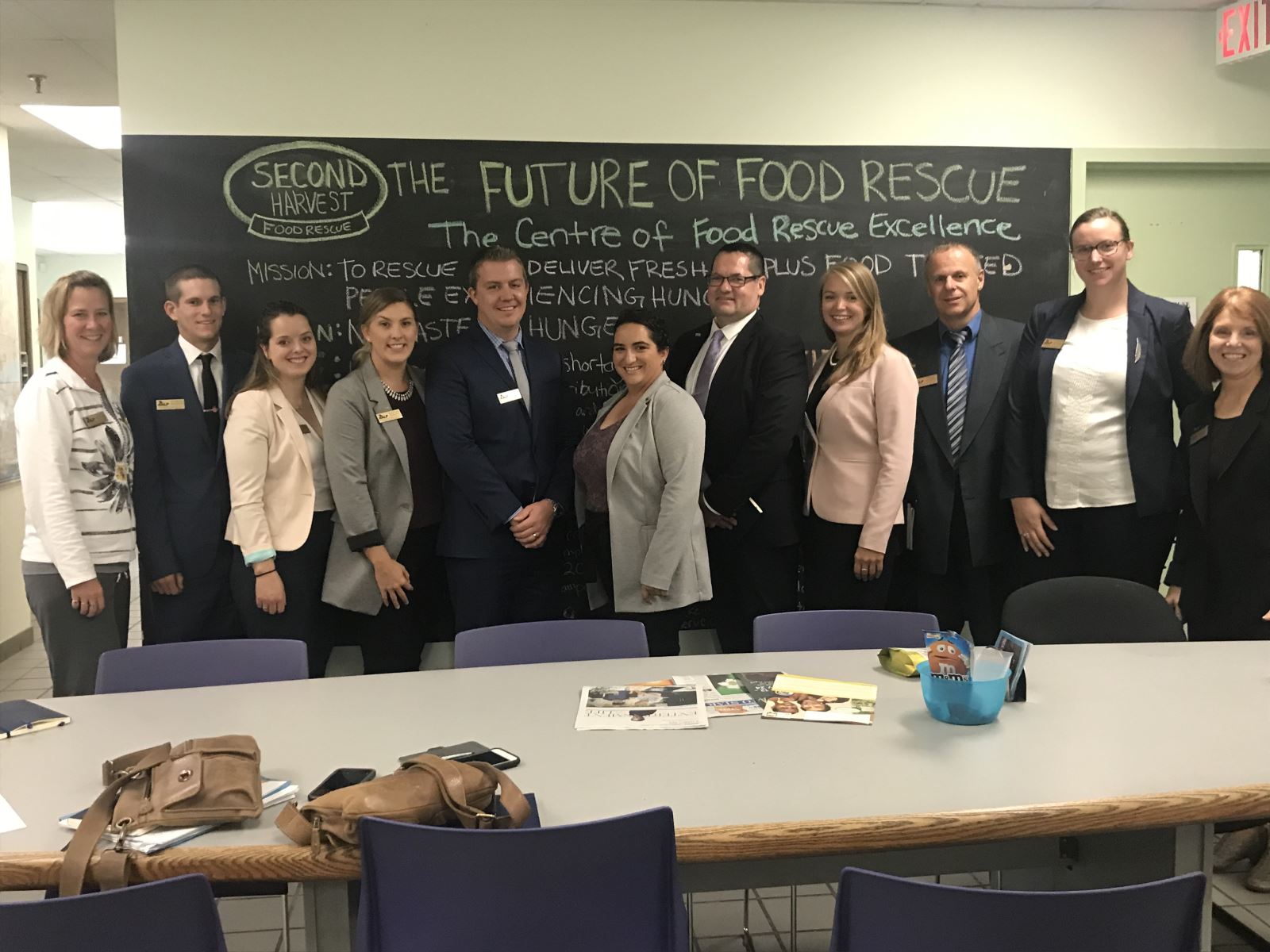Feeding the Hungry by Fighting Food Waste
Date: December 1, 2020
Author: Jaime Carson, MSc, AALP Class 18 and Chris Duyvelshoff, MSc, AALP Class 18

The entire AALP Class 18 will agree that we were beyond impressed and inspired from our trip to Second Harvest in Toronto. The tour began with presentations by Rose Barcarse, Program Coordinator, and Madison Maguire, Executive Coordinator, followed by a tour of the warehouse facility from Ian Macleod, Fleet and Warehouse Supervisor. It is evident the pride and satisfaction the team has in the work they are doing.
Filling the gap left by traditional food banks, Second Harvest specializes in perishable foods that are traditionally wasted in our food system. They provide a bridge between wasted food and social agencies. In 2018, Second Harvest programs redirected 12.3 million pounds of food, the equivalent of $32 million, or 34,000 meals/day!
The motto of Second Harvest is no waste, no hunger. Five core programs focus towards this goal. Defining and quantifying the problem of food waste is a key objective. Second Harvest initiated a first of its kind study, titled The Avoidable Crisis of Food Waste, to better understand the extent of food loss and waste from production to consumer in Canada. Partnering with Value Chain Management International and supported by The Walmart Foundation, the year-long study produced a 122-page technical report on food waste in Canada. The results were staggering.
The study found that 58% of all food produced in Canada is lost or wasted. One third of this total – equivalent to 11.2 million tonnes annually – is truly wasted food. Food that could have been used to feed the estimated 4 million Canadians who struggle to access healthy food. The report concludes with immediate and long-term recommendations on how to address food waste in Canada. Organizations like Second Harvest are part of the solution. However, changes are needed from all segments of the food supply chain from producers, processors, retailers, and households to truly reduce the scope of food waste in Canada. For more information, the report is available on the Second Harvest website – www.secondharvest.ca.
Their newest program, foodrescue.ca is like a dating site for food. This program allows restaurants, grocery stores, manufacturers, and primary food producers to post excess food and connect to local agencies needs. This allows rural, northern or religious communities to post about specific needs and find local solutions. Connecting local suppliers and social agencies, Second Harvest has created an incredible program, that cuts them out as the middleman and allows businesses and social agencies to talk directly. Swipe right!
The impact Second Harvest had on our group was palpable. Many of us witness food surpluses in our agricultural communities, or food insecurity within our own neighbourhoods, and Second Harvest has made an accessible solution to this. How can you help? Log onto their website and have a look into their programs. Donate excess food, volunteer to sort at the warehouse, or put together a team to make school lunches. Tell everyone you know about foodrescue.ca, or simply donate directly on their website. Considered a high impact charity, Second Harvest turns every $1 donation into a $5 benefit for society.
Share: